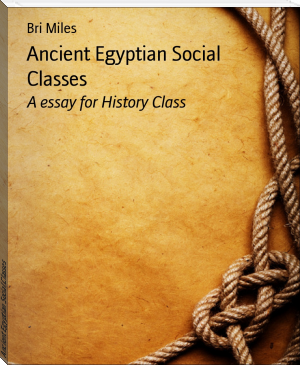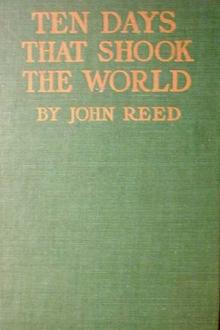Canada, Sir John George Bourinot [best time to read books .TXT] 📗

- Author: Sir John George Bourinot
Book online «Canada, Sir John George Bourinot [best time to read books .TXT] 📗». Author Sir John George Bourinot
It was now the middle of September, and Cartier determined, since his men had fully recovered from the fatigues of the voyage, to proceed up the river as far as Hochelaga, of which he was constantly hearing accounts from the Indians. When they heard of this intention, Donnacona and other chiefs used their best efforts to dissuade him by inventing stories of the dangers of the navigation. The two Gaspe Indians lent themselves to the plans of the chief of Stadacona. Three Indians were dressed as devils, "with faces painted as black as coal, with horns as long as the arm, and covered with the skins of black and white dogs." These devils were declared to be emissaries of the Indian God at Hochelaga, called Cudragny, who warned the French that "there was so much snow and ice that all would die." The Gaspe Indians, who had so long an acquaintance with the religious customs and superstitions of the French, endeavoured to influence them by appeals to "Jesus" and "Jesus Maria." Cartier, however, only laughed at the tricks of the Indians, and told them that "their God Cudragny was a mere fool, and that Jesus would preserve them from all danger if they should believe in Him." The French at last started on the ascent of the river in the _Emerillon_ and two large boats, but neither Taignoagny nor Domagaya could be induced to accompany the expedition to Hochelaga.
Cartier and his men reached the neighbourhood of Hochelaga, the Indian town on the island of {38} Montreal, in about a fortnight's time. The appearance of the country bordering on the river between Stadacona and Hochelaga pleased the French on account of the springs of excellent water, the beautiful trees, and vines heavily laden with grapes, and the quantities of wild fowl that rose from every bay or creek as the voyagers passed by. At one place called Achelay, "a strait with a stony and dangerous current, full of rocks,"--probably the Richelieu Rapids[1] above Point au Platon--a number of Indians came on board the _Emerillon_, warned Cartier of the perils of the river, and the chief made him a present of two children, one of whom, a little girl of seven or eight years, he accepted and promised to take every care of. Somewhere on Lake St. Peter they found the water very shallow and decided to leave the _Emerillon_ and proceed in the boats to Hochelaga, where they arrived on the second of October, and were met by more than "a thousand savages who gathered about them, men, women, and children, and received us as well as a parent does a child, showing great joy." After a display of friendly feeling on the part of the natives and their visitors, and the exchange of presents between them, Cartier returned to his boat in the stream. "All that night," says the narrative, "the savages remained on the shore near our boats, keeping up fires, dancing, crying out 'Aguaze,' which is their word for welcome and joy." The king or chief of this Indian domain was also called Agouahana, and was a member of the Huron-Iroquois stock.
The French visitors were regarded by the Indians of Hochelaga as superior beings, endowed with supernatural powers. Cartier was called upon to touch the lame, blind, and wounded, and treat all the ailments with which the Indians were afflicted, "as if they thought that God had sent him to cure them."
Cartier's narrative describes the town as circular, inclosed by three rows of palisades arranged like a pyramid, crossed at the top, with the middle stakes standing perpendicular, and the others at an angle on each side, all being well joined and fastened after the Indian fashion. The inclosing wall was of the height of two lances, or about twenty feet, and there was only one entrance through a door generally kept barred. At several points within the inclosure there were platforms or stages reached by ladders, for the purpose of protecting the town with arrows, and rocks, piles of which were close at hand. The town contained fifty houses, each about one hundred feet in length and twenty-five or thirty in width, and constructed of wood, covered with bark and strips of board. These "long houses" were divided into several apartments, belonging to each family, but all of them assembled and ate in common. Storehouses for their grain and food were provided. They dried and smoked their fish, of which they had large quantities. They pounded the grain between flat stones and made it into dough which they cooked also on hot rocks. This tribe lived, Cartier tells us, "by ploughing and fishing alone," and were "not nomadic like the natives of Canada and the Saguenay."
Cartier and several of his companions were taken by the Indians to the mountain near the town of Hochelaga, and were the first Europeans to look on that noble panorama of river and forest which stretched then without a break over the whole continent, except where the Indian nations had made, as at Hochelaga, their villages and settlements. From that day to this the mountain, as well as the great city which it now overlooks in place of a humble Indian town, has borne the name which Cartier gave as a tribute to its unrivalled beauty. As we look from the royal mountain on the beautiful elms and maples rising in the meadows and gardens of an island, bathed by the waters of two noble rivers--the green of the St. Lawrence mingling with the blue of the Ottawa--on the many domes and towers of churches, convents, and colleges, on the stately mansions of the rich, on the tall chimneys of huge factories and blocks upon blocks of massive stores and warehouses, on the ocean steamers on their way to Europe by that very river which Cartier would not ascend with the _Emerillon_; as we look on this beauteous and inspiriting scene, we may well understand how it is that Canada has placed on Montreal the royal crown which Cartier first gave to the mountain he saw on a glorious October day when the foliage was wearing the golden and crimson tints of a Canadian autumn.
On Cartier's return to Stadacona he found that his officers had become suspicious of the intentions of the Indians and had raised a rude fort near the junction of the river of St. Croix and the little stream {42} called the Lairet. Here the French passed a long and dreary winter, doubtful of the friendship of the Indians, and suffering from the intense cold to which they were unaccustomed. They were attacked by that dreadful disease, the scurvy, which caused the death of several men, and did not cease its ravages until they learned from an Indian to use a drink evidently made from spruce boughs. Then the French recovered with great rapidity, and when the spring arrived they made their preparations to return to France. They abandoned the little _Hermine_, as the crew had been so weakened by sickness and death. They captured Donnacona and several other chiefs and determined to take them to France "to relate to the king the wonders of the world Donnacona [evidently a great story-teller] had seen in these western countries, for he had assured us that he had been in the Saguenay kingdom, where are infinite gold, rubies, and other riches, and white men dressed in woollen clothing." In the vicinity of the fort, at the meeting of the St. Croix and Lairet, Cartier raised a cross, thirty-five feet in height under the cross-bar of which there was a wooden shield, showing the arms of France and the inscription
FRANCISCUS PRIMUS DEI GRATIA FRANCORUM REX REGNAT.
When three centuries and a half had passed, a hundred thousand French Canadians, in the presence of an English governor-general of Canada, a French Canadian lieutenant-governor and cardinal {43} archbishop, many ecclesiastical and civil dignitaries, assisted in the unveiling of a noble monument in memory of Jacques Cartier and his hardy companions of the voyage of 1535-36, and of Jean de Brebeuf, Ennemond Masse, and Charles Lalemant, the missionaries who built the first residence of the Jesuits nearly a century later on the site of the old French fort, and one of whom afterwards sacrificed his life for the faith to which they were all so devoted.
On the return voyage Cartier sailed to the southward of the Gulf, saw the picturesque headlands of northern Cape Breton, remained a few days in some harbours of Newfoundland, and finally reached St. Malo on the sixteenth of July, with the joyful news that he had discovered a great country and a noble river for France.
[1] The obstructions which created these rapids have been removed.
IV.
FROM CARTIER TO DE MONTS.
(1540-1603.)
The third voyage made by Cartier to the new world, in 1541, was relatively of little importance. Donnacona and the other Indians of Stadacona, whom the French carried away with them, never returned to their forest homes, but died in France. During the year Cartier remained in Canada he built a fortified post at Cap Rouge, about seven miles west of the heights of Quebec, and named it Charlesbourg in honour of one of the sons of Francis the First. He visited Hochelaga, and attempted to pass up the river beyond the village, but was stopped by the dangerous rapids now known as the St. Louis or Lachine. He returned to France in the spring of 1542, with a few specimens of worthless metal resembling gold which he found among the rocks of Cap Rouge, and some pieces of quartz crystal which he believed were diamonds, and which have given the name to the bold promontory on which stand the ancient fortifications of Quebec.
Cartier is said to have returned on a fourth voyage to Canada in 1543--though no record exists--for the purpose of bringing back Monsieur Roberval, otherwise known to the history of those times as Jean Francois de la Roque, who had been appointed by Francis his lieutenant in Canada, Hochelaga, Saguenay, Newfoundland, Belle Isle, Carpunt, Labrador, the Great Bay (St. Lawrence), and Baccalaos, as well as lord of the mysterious region of Norumbega--an example of the lavish use of titles and the assumption of royal dominion in an unknown wilderness. Roberval and Cartier were to have sailed in company to Canada in 1541, but the former could not complete his arrangements and the latter sailed alone, as we have just read. On his return in 1542 Cartier is said to have met Roberval at a port of the Gulf, and to have secretly stolen away in the night and left his chief to go on to the St. Lawrence alone. But these are among historic questions in dispute, and it is useless to dwell on them here. What we do know to a certainty is that Roberval spent some months on the banks of the St. Lawrence,--probably from the spring of 1542 to late in the autumn of 1543,--and built a commodious fort at Charlesbourg, which he renamed France-Roy. He passed a miserable winter, as many of the colonists he had brought with him had been picked up amongst the lowest classes of France, and he had to govern his ill-assorted company with a rigid and even cruel hand. Roberval is said to have visited the Saguenay and explored its waters and surrounding country for a considerable distance, evidently hoping {46} to verify the fables of Donnacona and other Indians that gold





Comments (0)